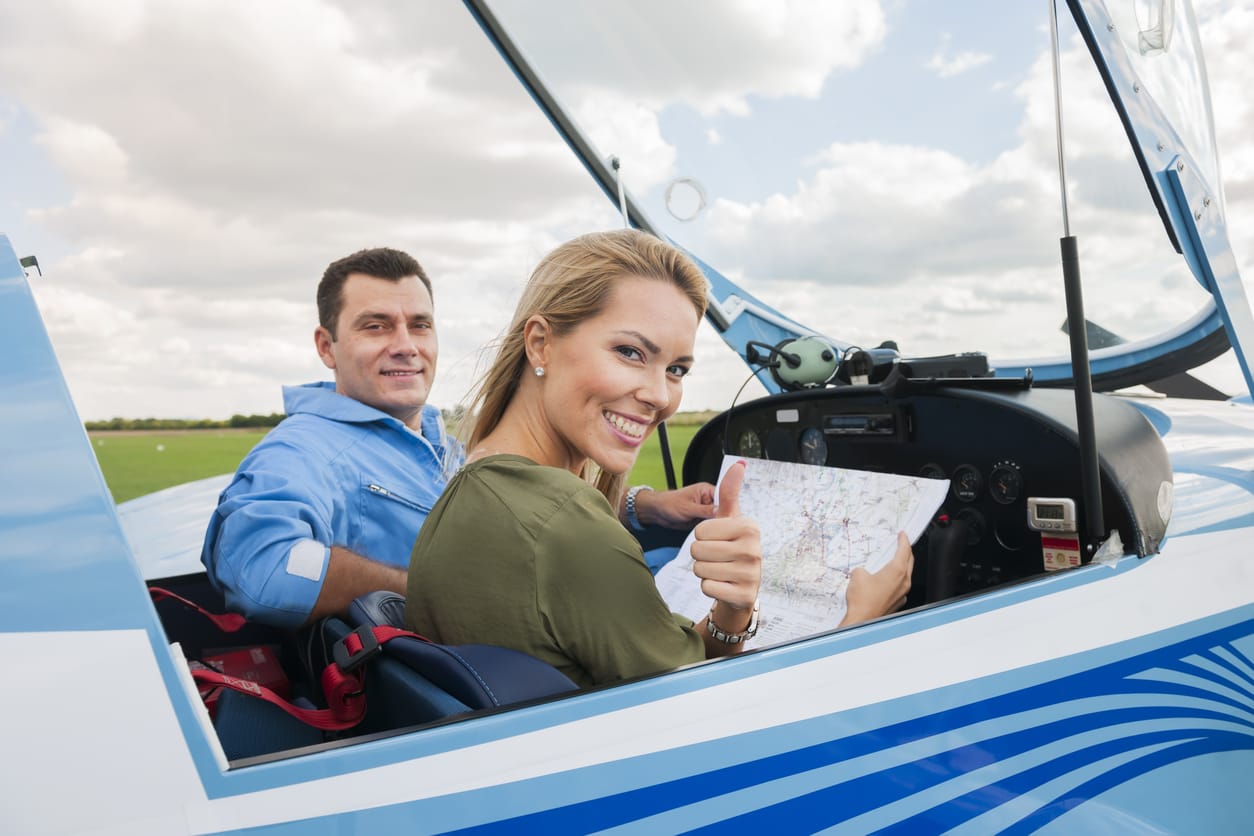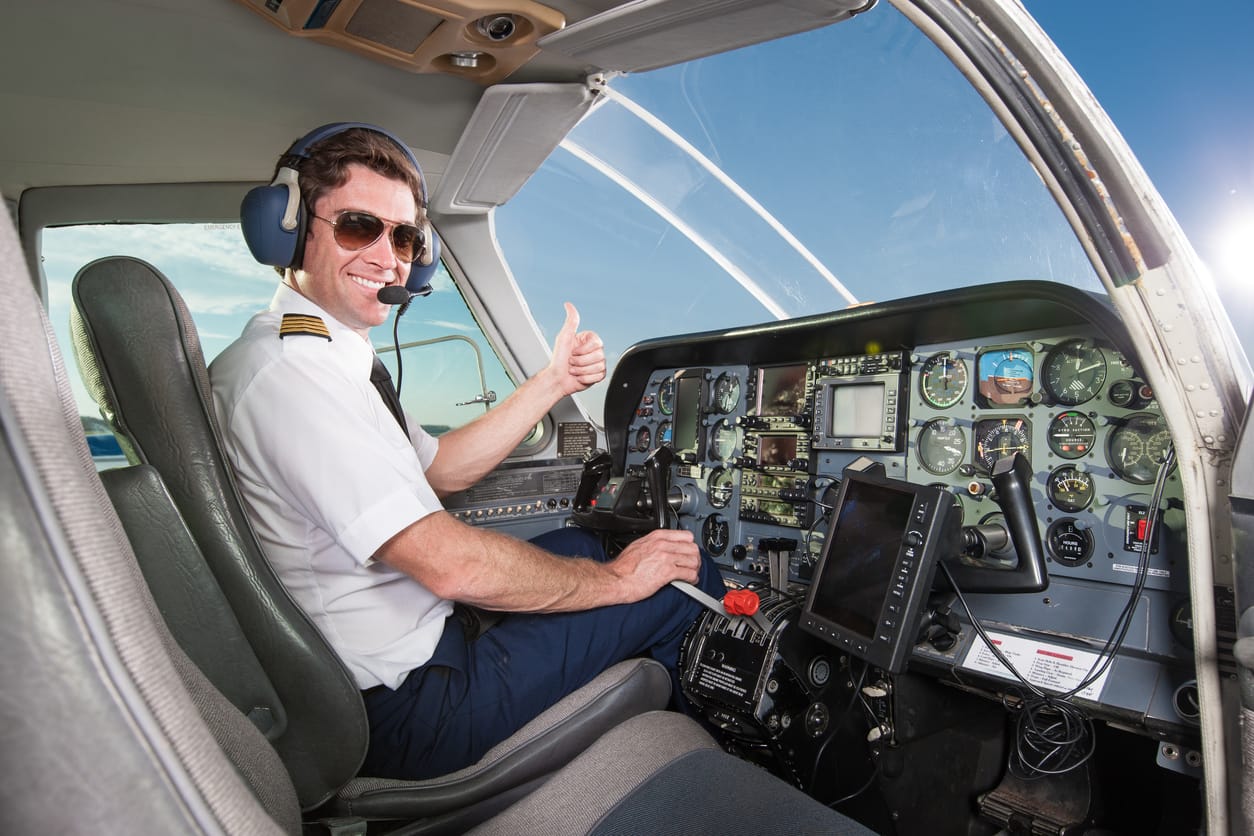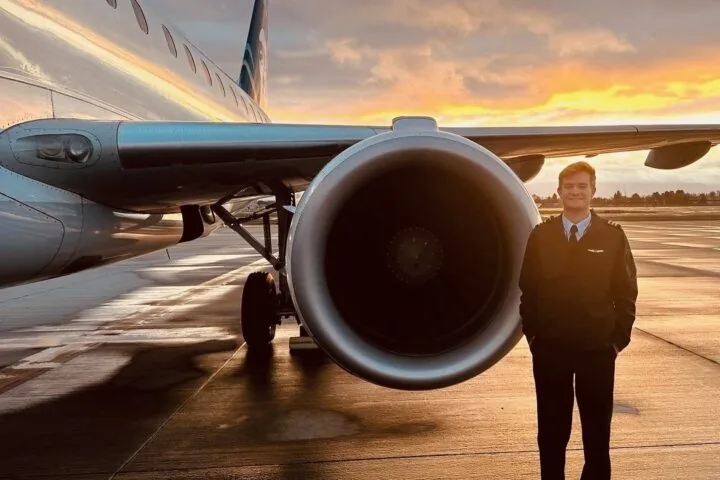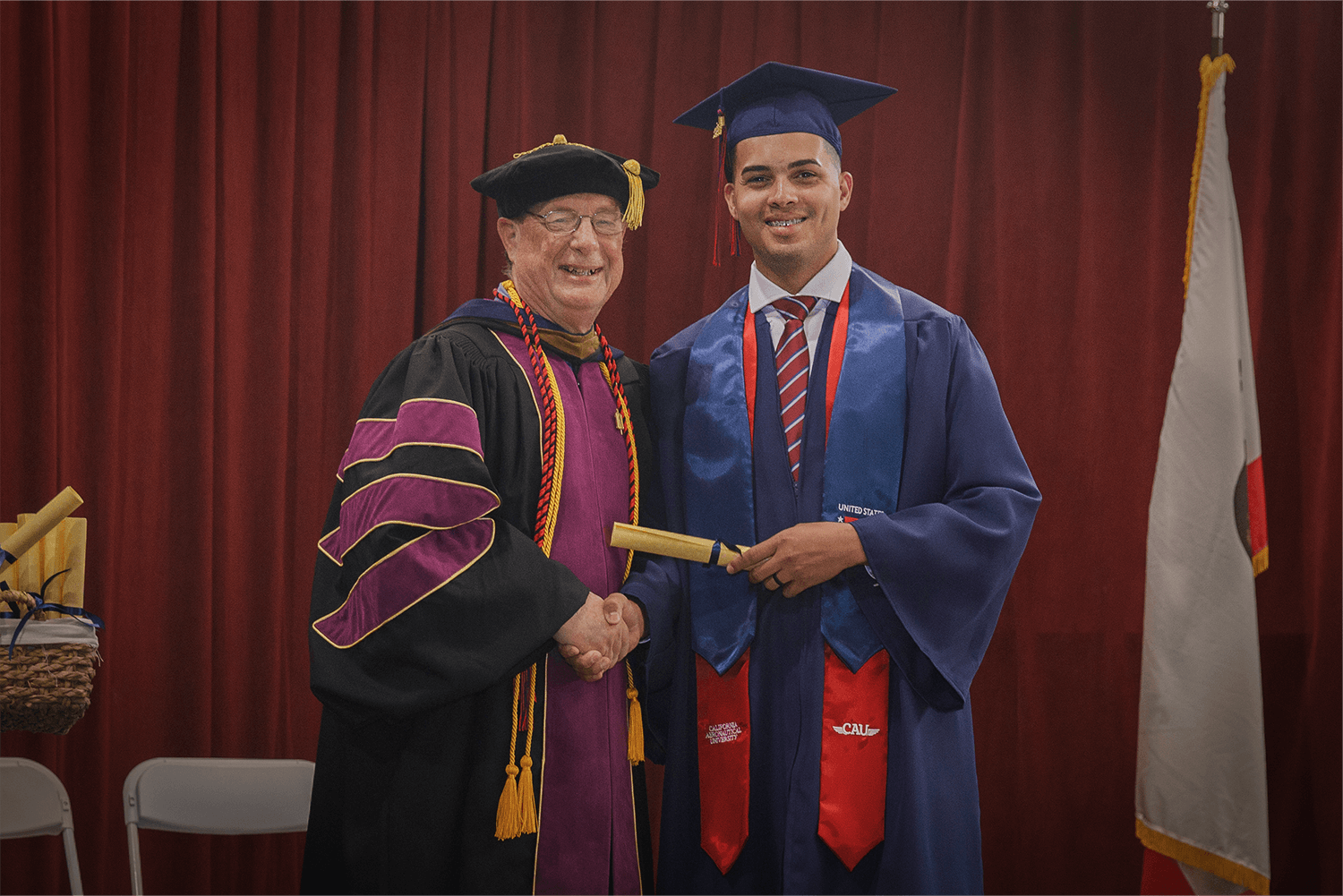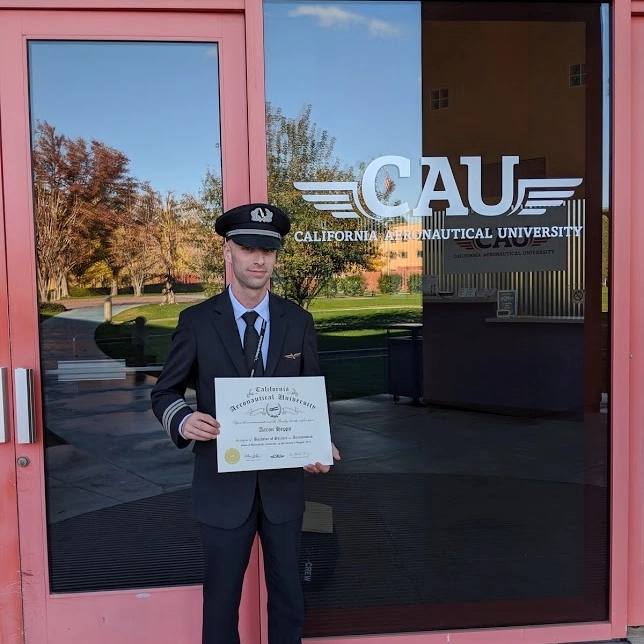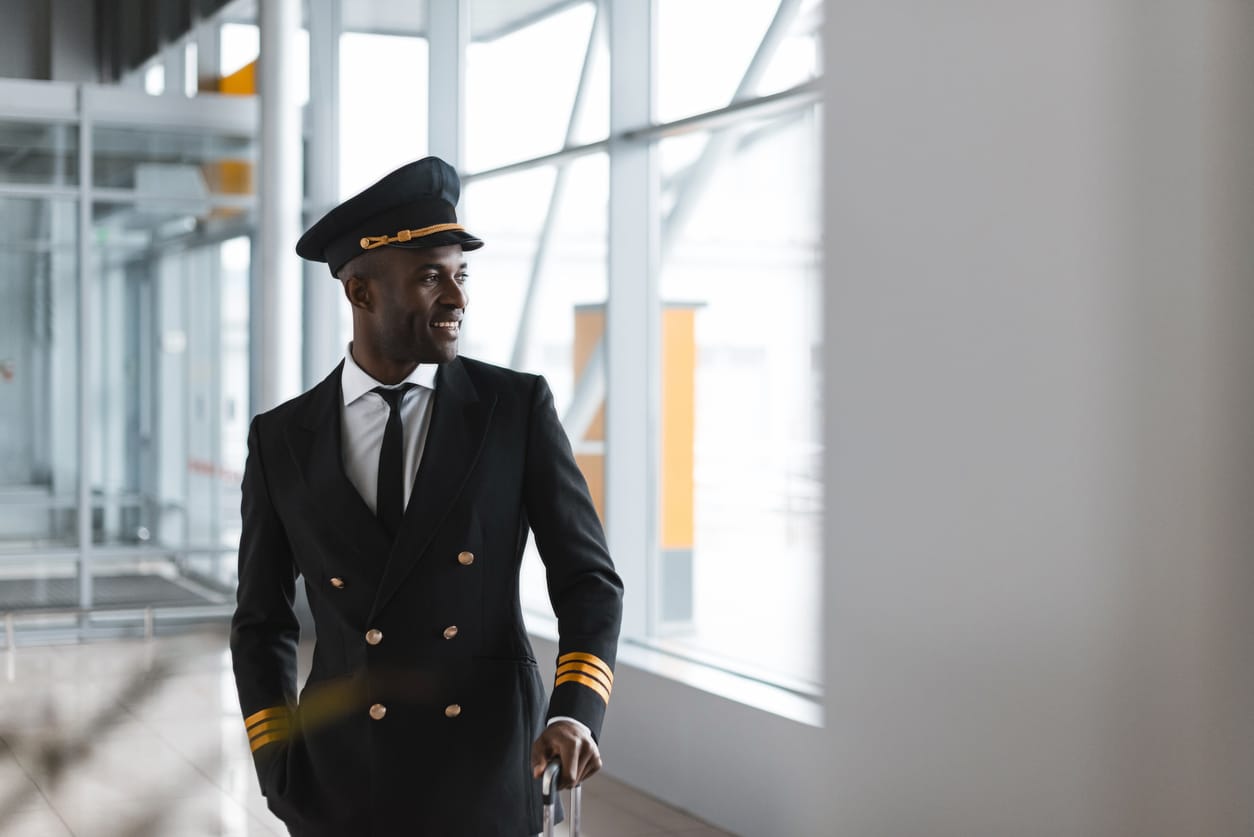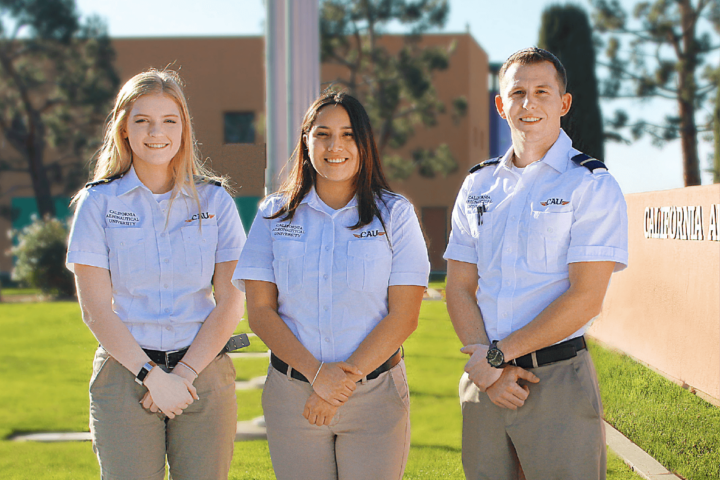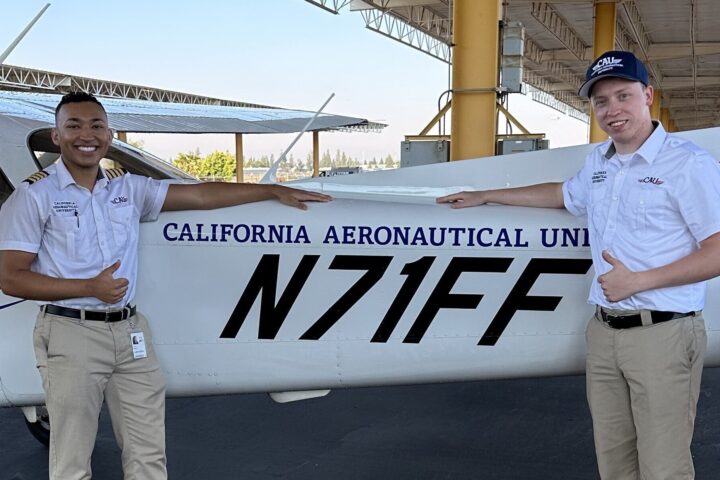A passenger in a small airplane cockpit’s front seat is in an entirely different environment than that of a passenger seated elsewhere in an airplane. Not only does the passenger have the privilege of seeing out the front of the airplane and experiencing all the wonderful interactions with weather, radio communication with air traffic control (ATC), and other things, but the front-seat passenger also has within reach almost every lever, switch, readout, technical reference, and other things that are available to the pilot.
That proximity of virtually everything the pilot may address is a good thing and potentially a terribly frightening thing at the same time.
The short answer to the question of what’s okay for a passenger to touch in a small airplane cockpit is nothing. However, under the right conditions, the correct answer is everything.
Begin a Good Front-Seat Passenger
The first rule of being a good front-seat passenger in a small airplane is not to touch anything at all without specific permission from the pilot. There are lots of things that look innocuous in the cockpit. For example, the air vents may appear to be innocuous. Also, the sun visors look like they would be no big deal to touch them.
Nothing could be further from the truth.
The first rule of being a good passenger during the pilot’s preflight is to avoid touching anything at all without specific permission from the pilot. There are lots of things that look innocuous on the outside of the airplane. For example, the static wicks look like little pieces of string hanging off parts of the airplane, and they appear to be innocuous. The fuel caps look like, well, fuel caps, and therefore look innocuous.
Nothing could be further from the truth.
One of the reasons that apparently-innocuous things may or may not be inappropriate to touch is that pilots may use cockpit resources in different ways than you might expect. For example one pilot may use the angle of the sun visors to determine a proper bank angle for a planned turn he or she intends to make. Another example: The sound made by an open air vent may interfere with the pilot’s ability to hear and respond to ATC.
There are of course lots of things that should be off-limits to touch without the pilot’s permission. For example, the control yoke or control stick is something on the never-touch-without-permission list. The engine throttle, mixture, and manifold pressure controls also are pretty much to be universally avoided by passengers.
On the other hand, some pilots enjoy engaging their passengers in the flight. One way to do that is to give the passengers permission or actually encourage them to do certain tasks in the cockpit. These tasks may involve touching otherwise-prohibited controls or even flying the airplane under the pilot supervision.
A good practice for a passenger-to-be is to ask the pilot whether or not the passenger will be permitted to touch anything outside or inside the airplane. If the pilot agrees to allow the passenger to touch things, it’s important that the passenger actually understands what the pilot says. For example. If the pilot says that it’s okay to touch the intercom volume control, that really doesn’t mean anything to the passenger unless he or she is shown specifically where that intercom volume control is and how to use it. The pilot may not be used to hearing questions about what is and what is not touchable, so give the pilot a chance to explain in detail what’s okay to touch if you get permission to touch something.
CRM in the Small Cockpit
Professional flight crews use something called crew resource management (CRM) to help ensure safety and optimal communication in the cockpit. Once good CRM became part of professional pilot training, the accident rate among all commercial flights plummeted.
If a person is a passenger in a private plane and has the privilege of sitting next to the pilot, of course, we’re not talking about a professional flight crew. However, CRM methods and concepts can still be applied to help ensure that everything happens safely. Here are some basic ways to ensure such a high degree of safety (and more fun):
Establish ahead of time whether or not the passenger will be given the opportunity to fly the airplane for a while. If so, there must be a positive exchange of control. Let’s assume that the pilot’s name is Jeff and the passenger’s name is Mary. Let’s assume further that Jeff is going to relinquish temporary control to Mary to give her a feel for what it’s like to fly. The transfer of control would probably sound something like this:
Pilot Jeff: “Mary, you take the airplane.”
Passenger Mary: “I have the airplane.” On hearing this, Jeff relinquishes the controls.
Pilot Jeff: “You have the airplane.”
You can see that this verbal communication makes it crystal clear who has the controls at any given moment. Obviously, when Jeff needs to take control of the airplane back, or when Mary wishes to relinquish control back to Jeff, there are similar things said between the two. It’s a nice, tight way to help ensure a safe flight.
Another part of CRM can take place if the pilot and the front-seat passenger have agreed ahead of time that the passenger may act more or less like a first officer (“copilot”). Let’s say that the pilot needs to descend from 9,000 feet to 3,000 feet. Let’s further assume that the pilot has already shown Mary how to read different altitudes off of the altimeter. (The altimeter is the instrument that identifies the airplane’s altitude above sea level.) The pilot may assign or request passenger Mary to help by calling out certain altitude changes, like this:
Pilot Jeff: “Mary, we will descend from 9,000 feet to 3,000 feet. Please call out each thousand-foot altitude as we descend.”
Passenger Mary: “I’ll call out each thousand-foot altitude.”
Now, at 8000 feet, passenger Mary will say, “Eight thousand feet,” and so on.
Being the Radioman (or Woman)
One thing some pilots will do is to permit their front-seat passenger to make some of the radio announcements that are required in different phases of flight. The most common of these passenger-permitted announcement is the initial call-up to Ground Control at airports with an active control tower.
Usually, the permissive pilot will write out what to say, but we’ll tell you how to figure it out so you can impress your pilot. Be sure he or she has already decided to let you do this task!
To make this announcement, you must know certain things ahead of time. Your pilot can tell you the answers to these questions:
- What is the identifier or the airport?
- What is the identifier for the airplane? (Example: Cessna 12233.)
- Where are you parked or from where you are calling? (Example: Transient Parking.)
- What is the identifier for the ATIS? (Example: These are always letters of the alphabet, spoken using the international phonetic alphabet.)
- What motion does the pilot want to coordinate with ATC? (Example: To taxi to the runway.)
- Where is the push-to-talk button for the microphone?
Here is the Announcement that would be made based on the above examples:
MONTGOMERY GROUND, CESSNA 12233, TRANSIENT PARKING, BRAVO, READY TO TAXI.
To make the announcement, wait until the pilot says to speak, then hold down the push-to-talk button for the microphone, say the whole thing, then remember to take your finger off of that button.
ATC will answer, and the pilot will either reply him/herself or will have told you how to respond.
You Can Be a Co-Pilot, More or Less
Although many pilots find it important to handle 100% of the flying and communicating abilities, others are motivated to allow a front-seat passenger to participate to various extents in the flight. As long as the pilot has given permission, and has been extremely specific about what is okay to touch and what is okay to do, you can experience an extra level of the thrill of flying. Just know that the pilot is always there to take over or correct whatever you may do as long as you are willing to relinquish control when the pilot asks for it. You will do that, won’t you?
Ready to soar in your aviation career?
Mr. Matthew A. Johnston has over 23 years of experience serving various roles in education and is currently serving as the President of California Aeronautical University. He maintains memberships and is a supporting participant with several aviation promoting and advocacy associations including University Aviation Association (UAA), Regional Airline Association (RAA), AOPA, NBAA, and EAA with the Young Eagles program. He is proud of his collaboration with airlines, aviation businesses and individual aviation professionals who are working with him to develop California Aeronautical University as a leader in educating aviation professionals.
